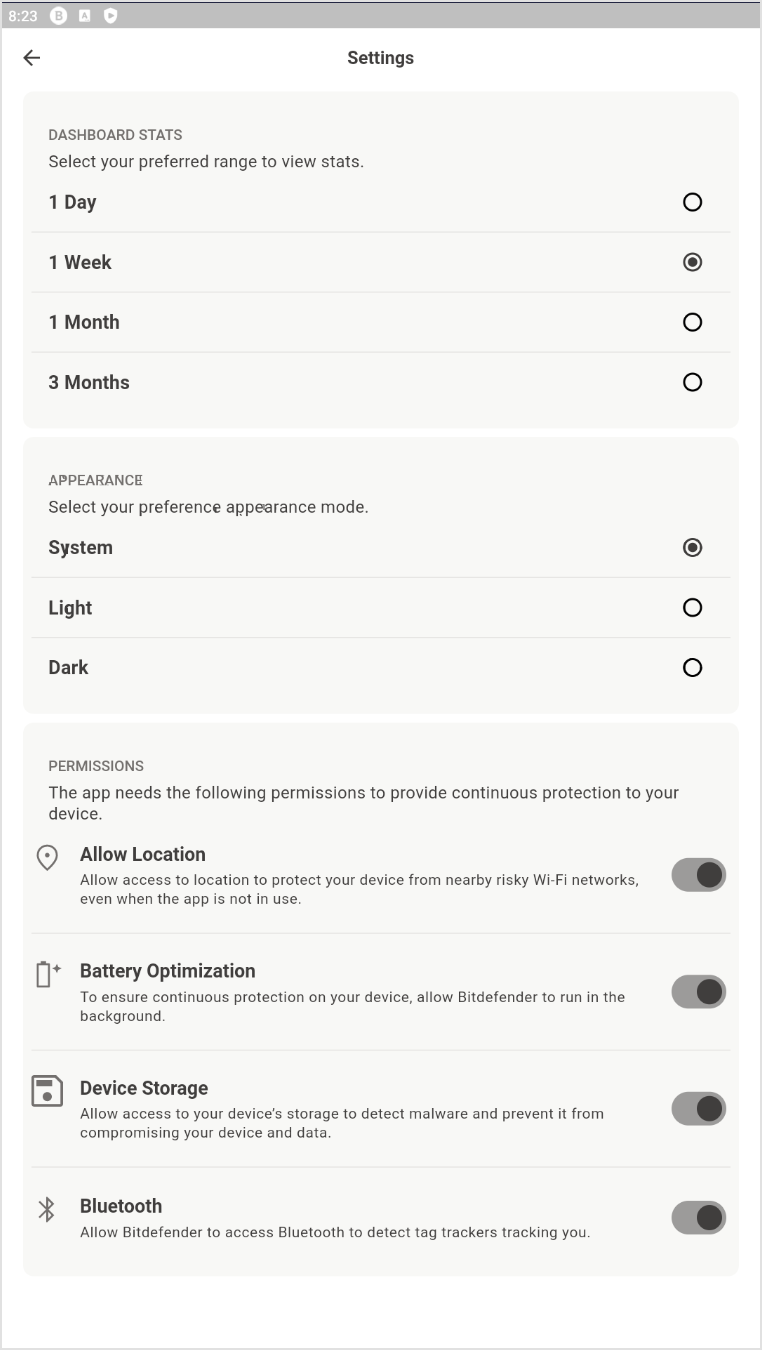Setting permissions in Android devices
Android app permissions are designed to protect users' privacy and security by controlling what an app can access and do on a device.
For Android 6 and higher versions, users may receive one or more permission requests when using the GravityZone MTD.
The permission requests depend on the policy configuration in GravityZone Control Centerand the type of activation chosen. The permission types include:
Device storage access - the app needs device storage access to protect against malware. This protects users' devices and data from malware.
Location access - the app needs to know these Wi-Fi characteristics to defend devices and data against sophisticated network attacks.
Note
The Wi-Fi connection's SSID and BSSID require location permission. The GravityZone MTD does not store location. If the location is disabled in the Privacy Policy, the app does not store location data.
VPN configuration - In response to threats, the mobile security administrators can configure a VPN connection. The app's screens require user authorization. These screens help users install apps and adjust device policies.
Device admin privileges - In certain policy configurations, for instance, when Samsung Knox permissions are enabled, the mobile app needs device admin privileges for the device.
Camera access - To activate the app using a QR code, the permission to access the camera and read the image is needed.
Background permission for battery optimization - This allows adding the GravityZone MTD to the Android battery optimization exemption list.
The existing permissions are also visible on the GravityZone MTD.

These permission requests help to protect the device from malware and network attacks.